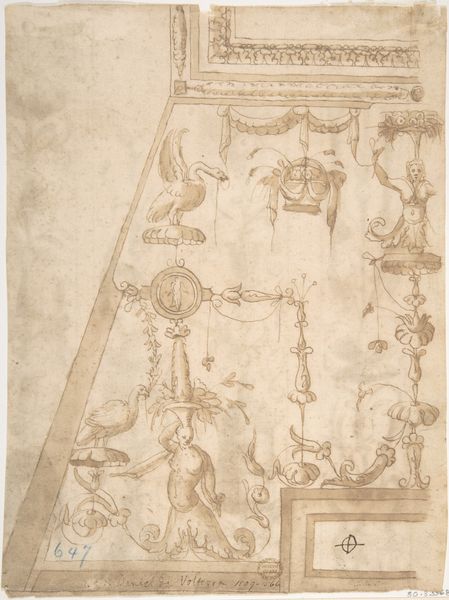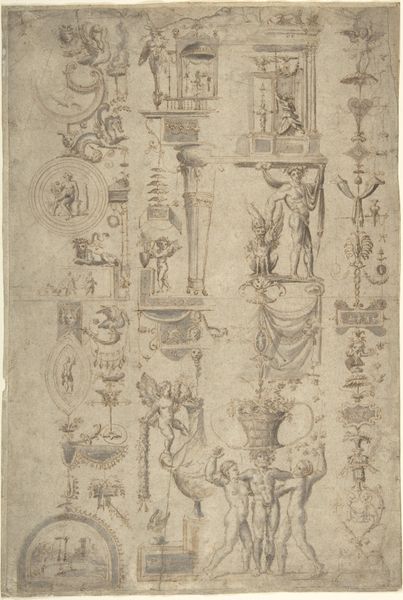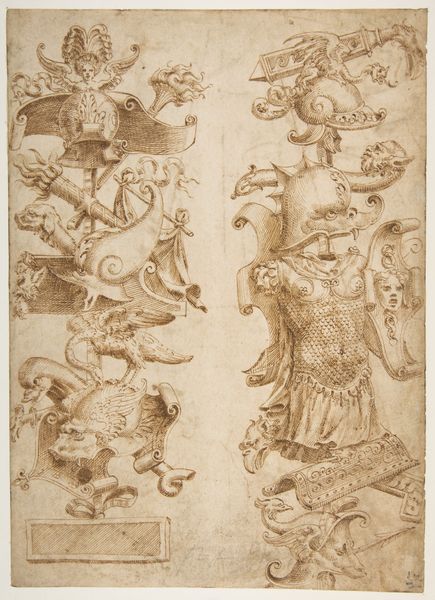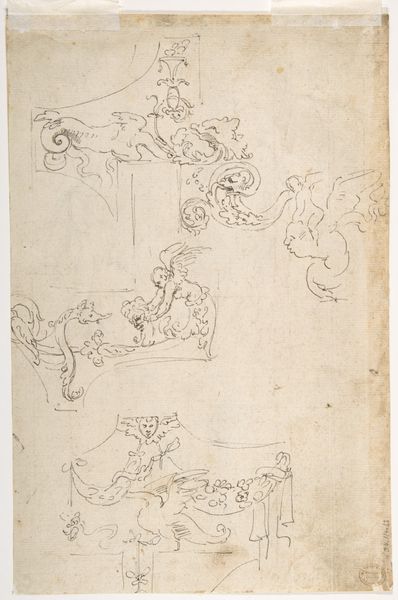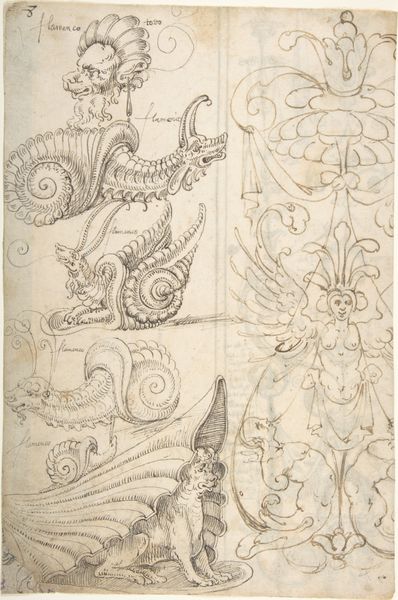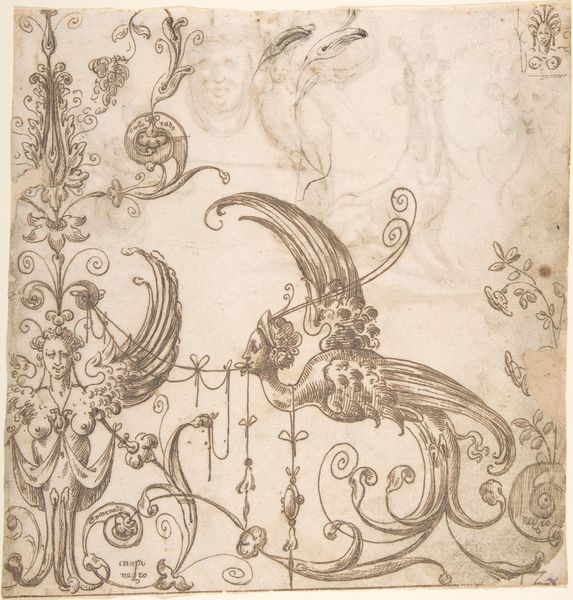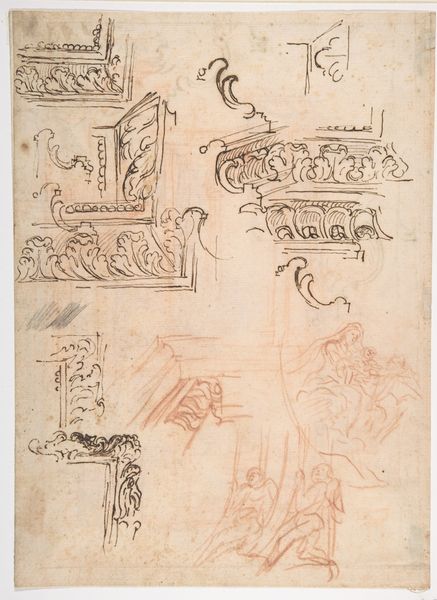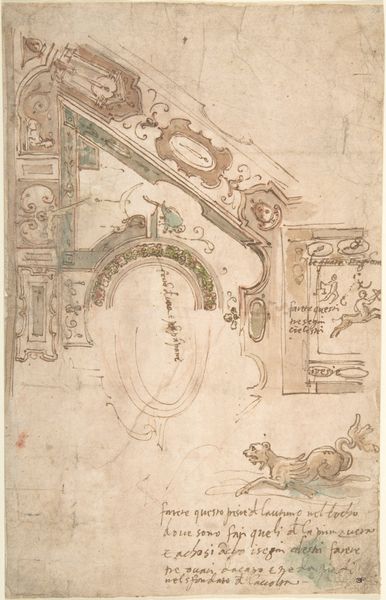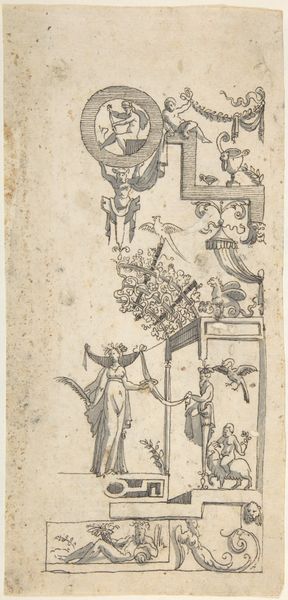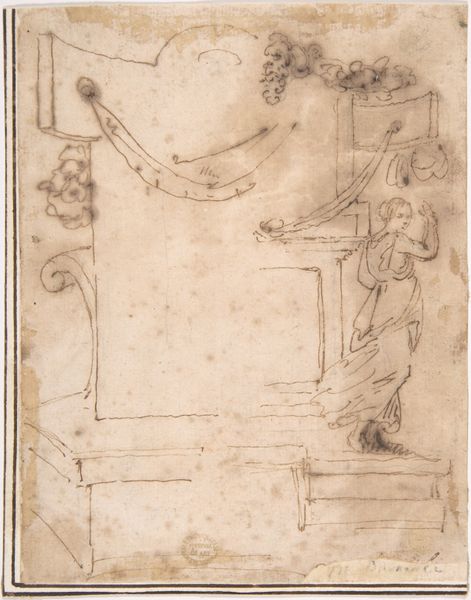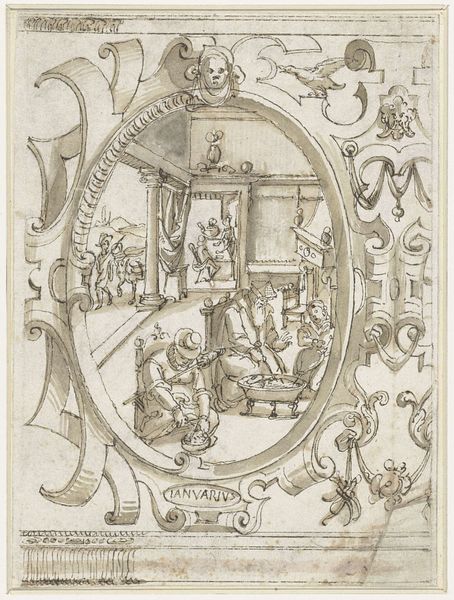
Ornamental sketches with a Griffin and Architectural Elements 1500 - 1600
0:00
0:00
drawing, ink
#
drawing
#
form
#
11_renaissance
#
ink
#
line
#
italian-renaissance
Dimensions: 8 x 5 13/16 in. (20.3 x 14.8 cm)
Copyright: Public Domain
Curator: Today, we’re observing a fascinating drawing from the late 15th or early 16th century titled "Ornamental sketches with a Griffin and Architectural Elements." The artist remains anonymous, and it’s currently held here at the Metropolitan Museum of Art. Editor: My first impression is a kind of organized chaos. The page is filled with an array of architectural fragments and flourishes. It's almost like a catalog of possible design elements. Curator: Precisely! These kinds of sketchbooks served as vital resources for artisans. During the Italian Renaissance, a revival of classical forms intertwined with innovative design became highly fashionable and drove demand for this kind of inspirational material. It directly speaks to the way artistic ideas were disseminated and applied. Editor: Looking closely, you can really appreciate the linework—the delicacy, and the varying weights creating depth and shadow, despite being an ink drawing. It really does invite a tactile kind of seeing. The recurring motif seems to be based on a combination of plant-like spirals combined with geometrical constructions. Curator: And that merging represents a larger cultural shift. Renaissance art became intrinsically intertwined with political statements. In Northern and Central Italy, displaying classical knowledge and elegance wasn't only for pleasure. it demonstrated power. So the use of griffins and classical architectural vocabulary were not arbitrary artistic choices. Editor: It is interesting you bring that up! Because for me these elements combined lend the overall composition a whimsicality! See, the griffin is perched almost playfully atop that spiraling foliage element. There's a real dance between the rational and the fantastical. Curator: Well, artistic license definitely had its role but those choices reflect how knowledge became integrated into the visual language of authority during a particular historical moment. Editor: Agreed. Regardless, spending time observing something like this and you truly get a sense of what inspired artists and patrons back then. It's like getting a glimpse into their aesthetic world. Curator: Precisely, and this sketch exemplifies the power of art to not just reflect history, but actively shape the world we live in. Editor: I think what I'll take away with me is that how the interaction of rational geometry with the seemingly free form plant world combines and forms into ornament! It inspires so much creativity!
Comments
No comments
Be the first to comment and join the conversation on the ultimate creative platform.
